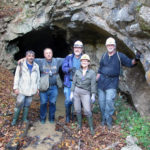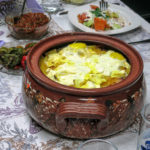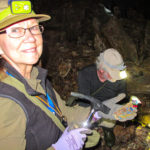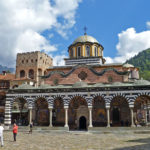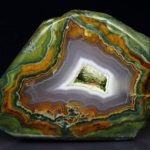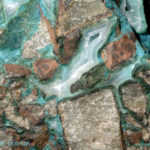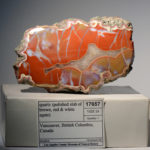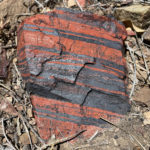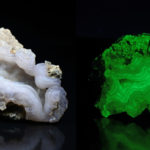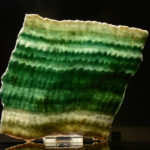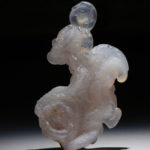Recent Speakers, Interesting Programs
The Sedona Gem and Mineral Club has a roster of knowledgeable, professional speakers. Monthly meetings usually include a presentation on an array of subjects including geology, minerals and mineral collecting, and much more. Another reason to be a member!
Members and Guests are invited to submit speaker proposals which are compensated. Speakers are required to use visual aides and PowerPoint is recommended. Set-up assistance is provided. Currently presentations are presented in person and via Zoom from our meetings, and we will assist in the broadcast.
Coming and Past Speakers
Dr. Corne Kreemer, “The Use of GPS in Unraveling Present-Day Curstal Deformation in the American Southwest; April, 2025
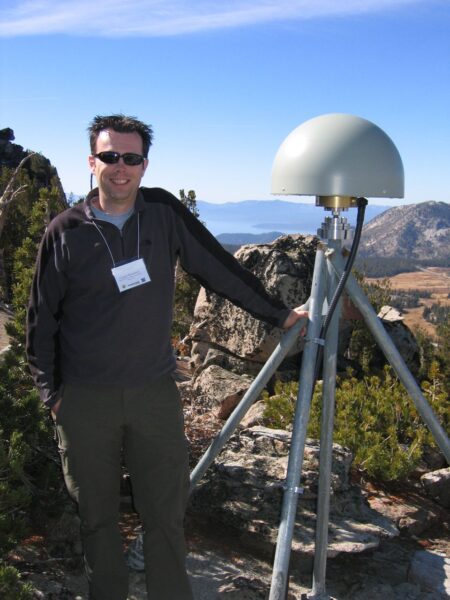
Dr. Kreemer received his undergraduate degree from Utrecht University in the Netherlands in 1997 and his Ph.D. degree from Stony Brook University, New York, in 2001. He was a postdoctoral fellow until 2004 at the École Normale Supérieure, Paris, and the Collège de France. Since 2004, he has been an academic member of the Nevada Geodetic Laboratory at the Nevada Bureau of Mines and Geology at the University of Nevada, Reno. He also holds a joint position at the Nevada Seismological Laboratory.
His primary expertise is in converting GNSS-derived crustal velocities into
strain rate and vertical land motion models and relating those results to
earthquake occurrence and lithosphere and mantle dynamics. He has also
worked on reference frame definitions, several earthquakes, tsunami early
warning, and time-series analysis techniques. He is best known as the main
contributor to the Global Strain Rate Model. He has published over 90 peer-reviewed articles.
Peter J. Pilles, Jr Honanki Cliff Dwelling: Save America’s Treatures Grant, 2025
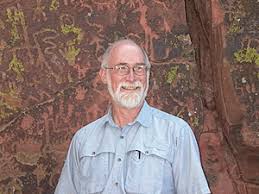
PETER J. PILLES, JR. received his BA degree from Arizona State University in 1967 and worked at Pueblo Grande Museum from 1965-1967 and the Museum of Northern Arizona from 1967 until 1975, when he became the Forest Archaeologist for the Coconino National Forest. He has given many presentations and authored numerous publications that reflect his specialty areas of Flagstaff and the Verde Valley, rock art, cultural resource management, and public archaeology. Peter has been an advisor to many local, state, national, and international organizations concerning archaeological site development and interpretation and has taught courses in cultural resource management, archaeological law enforcement, and rock art conservation and management. For his public archaeology work, he has received awards from the Governor of Arizona, the Secretary of Agriculture, the U.S. Forest Service, the Arizona Archaeological and Historical Society, the Arizona Archaeological Society, the American Rock Art Research Association, the Arizona Archaeology Advisory Commission, and the Arizona Preservation Foundation.
Peter’s presentation will include the topics of Honanki Cliff Dwelling: Save America’s Treasures Grant and Indian archaeological sites of Sedona and surrounding communities.
John Sutton, The Fantastic Geologic Creation of Arizona, February, 2025
John’s presentation is about the fantastic geologic creation of Arizona 1.8 billion years ago and major rocky events since.
Besides being a Member of our Club, John is an Army veteran who served in Korea from 1969 through 1971 (thank you for your Service John). He is also an accomplished deep-sea diver and has owned his diving company contracting projects for the US Navy and the State of Virginia for 25 years. He has been a commercial helicopter pilot, and a historical interpreter for the National Park Jamestown and Yorktown, Virginia. He still owns a tour company in Virginia that offers private history tours in Jamestown, Williamsburg and Yorktown, Virginia.
Although he is now partially retired from this fascinating, varied career, he continues to be a City of Cottonwood Airport Commissioner as well as a volunteer geology interpreter at the Arizona State Historical Museum in Jerome. With his excellent knowledge of geology in the Jerome area, it promises to be a most interesting and entertaining presentation.
Paul Marsh, January, 2025
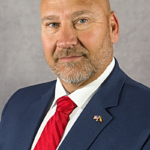
The Sedona Gem and Mineral Club will meet on Tuesday, January 21st at the Sedona Public Library at 7:00 p.m. for a presentation by Paul Marsh. Guests and visitors are welcome to attend.
Paul is a State Mine Inspector with 25 years of experience in mining and construction, 15 years of experience in mining and construction safety, Certified MSHA Blue Card Instructor – Surface, Certified Mine Safety Professional / CMSP USA # 1075. In 2015, Paul received the Arizona Mining Association “Copper Pot Award” Safety Professional of the Year, and is a United States Marine Corps Veteran. Paul’s presentation will bring insight into the mining methods for mineral extraction and processes from ore to finished product.
Drake Meinke, “Arizona Copper Mining & Art Works,” November, 2024

The Sedona Gem and Mineral Club will meet Tuesday, November 19, 2024 at the Sedona Public Library at 7:00 p.m. for a presentation by Drake Meinke. He will be speaking on Arizona copper mining and artworks.
Drake Meinke is the curator of the Arizona Copper Art Museum in Clarkdale. Drake was born in Minnesota to parents in the antiques business. He grew up with copper surrounding him and worked in his parents’ business as a teenager. Drake is a U.S. Army veteran who while serving also was helping out with his parents’ copper business during the 1980’s – 2000’s. Both Drake’s collection and his mother’s became large enough for thoughts of a museum, so he began to look for an appropriate town for the Museum of Copper. The town of Clarkdale was chosen as the best location in the whole country due to its special copper connection to the world. Drake refurbished the former Clarkdale public high school to become the Arizona Copper Art Museum.
Drake will be discussing copper art history along with the mining history of Clarkdale and other locations around the world and presenting the geology of copper mining.
In addition to Drake Meinke’s presentation, The Sedona Gem & Mineral Club meeting will also feature some fabulous member displays and close with the member’s monthly raffle of some great rock and mineral specimens. Guests and visitors are welcome to attend.
Dr.Peter K. M. Megaw, “Minerals of Arizona,” October, 2024
Dr. Megaw Is a Consulting Geologist (PhD UofA) President of IMDEX/Cascabel and co-founder of MAG Silver. Peter has been a dedicated mineral collector since first setting foot in Santa Eulalia in 1977. He moved to Tucson in 1979 and quickly joined the Tucson Gem and Mineral Society, taking on the job of Exhibits Chair for the Tucson Show in 1984. His mineral collecting has come to focus almost exclusively on Minerals of Mexico and he has spoken and written extensively on specimen localities there; most recently in-depth articles for Mineralogical Record on the Santa Eulalia Mining District in Chihuahua, Mexico and Milpillas, Sonora (co-authored with Evan Jones). He is also an executive editor for Rocks and Minerals and occasionally writes for Mineralogical Monographs. In his spare time he collaborates on studies of silver isotopes in silver minerals, is Mindat’s moderator for submissions on Mexico, and co-moderator of the FMF Mineral Forum, often with tongue planted firmly in cheek. A combination of the above led him to be awarded the Carnegie Mineralogical Award for 2009. The unusual selenide species “petermegawite” was named for him in early 2022. Peter will be able to join us by Zoom into our live meeting; we are looking forward to his presentation!
Helen Serras-Herman, “Gem Sculpture,” April, 2024
Our Speaker this month is Helen Serras-Herman, an award-winning gem and jewelry artist and 2003 National Lapidary Hall of Fame Inductee. Helen promises a very unique lecture presentation for our April club meeting. She will share her passion for carved gems, the interconnection between fine art and the spell-bounding natural mineral world, and her personal journey from sculpture to gem sculpture. While showing examples of her 41-year artwork, Helen reflects on her sources of inspiration from her world travels to mines and archaeological sites, the ancient Greek mythology, and her southwest environment. She will share her Copper Trails and Arizona Gems Collections that focus on rare and unusual Arizona gemstones.
Helen will bring copies of her recently-published book Carved Gems – Inspiration & Expertise. Reviews of her book state that “readers will be captivated by Helen’s autobiographical story that is so closely intertwined with her art, inspired by her descriptions, educated about her methods, mesmerized by her images, and compelled to create, embrace, collect, wear, study, and fall in love with gem artwork.”
Helen Serras-Herman’s award-winning, one-of-a-kind, distinctive gem sculpture and jewelry art has been exhibited world-wide and published in over 300 trade magazines and books. Born in New York City, Helen lived in Athens, Greece and studied sculpture (MFA) in Berlin, Germany. She is also a graduate gemologist (FGA) and apprentice to the last master of the English school of Glyptic Arts. In 2005, after 18 years in Maryland, Helen and her husband moved to Rio Rico.
Helen is a member of the American Gem Trade Association (AGTA), a Fellow member of the Gemological Association of Great Britain (FGA), and a member and past President of the Gem Artists of North America (GANA). She is also a frequent article contributor to Rock & Gem magazine, EZ-Guides gem show guides published by XpoPress, and other gem trade publications. She is also President of the Rio Rico Historical Society since 2018.
Les Presmyk, ” History of Mining in Arizona,” March, 2024
Our Speaker this month will be Les Presmyk a Mining Engineer who has dealings with coal mines in Arizona, New Mexico and Colorado. Les will be sharing his history of Mining in Arizona. He and his wife of 38 years, Paula, are Arizona natives and are both graduates of the University of Arizona.
Les started collecting at the age of 10. Their displays have received AFMS Regional and National Trophies, along with the Prospectors and Pearl Trophies in Denver and the Desautels, Lidstrom and Bideaux Trophies at the Tucson Show.
He has been President of the Mineralogical Society of Arizona, Board member and Chairman of the Arizona Mineral and Mining Museum Foundation (now the Flagg Mineral Foundation), and a member of the Tucson Show Committee for 29 years.
He has explored and collected in a number of localities in Arizona, Missouri and Mexico and provided engineering expertise at the San Francisco mine in Sonora, Mexico, the Brushy Creek mine in Missouri and the Red Cloud mine in Arizona. Les has written several articles and co-authored the recently published “Collecting Arizona”. He has spoken at the Dallas Symposium and the Northwest Friends of Mineralogy Symposium, along with the Arizona and New Mexico Symposiums, the Tucson, Springfield, and Denver Shows, and numerous mineral clubs throughout the United States.
Pat McMahan & Malida Bowes, “Rockhounding in Australia”, February, 2024
Pat McMahan has been collecting agates since retiring 35 years ago. Today his collection has more than 9,000 polished agate specimens from over 550 locations, most of which he has found himself. He has collected in all 11 Western states in the U.S., Canada and Alaska. His long years of intensive collecting has resulted in what many say is the best and most comprehensive collection of sagenite and plume agate in the world. His rocks have been displayed in shows throughout Europe, Canada and the US.
In 2016 Pat completed a book called “Agates, The Pat McMahan Collection”. Many agate collectors describe this book as the most comprehensive and beautiful agate book ever produced. This 500-page book includes 1,250 color photos of agates from 300 deposits worldwide and relays personal collecting stories, prospecting techniques, and history telling about the early discoveries of well-known deposits. He has also published articles in Rock and Gem Magazine, the German magazine Mineralien Welt, and is the author of a chapter on agates with inclusions in the authoritative book “Agates II”.
Pat has been president of our rock club 5 times and has held virtually all other executive positions in the past. He organized and ran our first rock show in the year 2000 and has been show chairman for over ten years.
Milada Bowes is a retired dentist from Halifax Nova Scotia, Canada. She became interested in rock collecting in 2011 and it quickly became a passion. The challenging cliffs and beaches along the Bay of Fundy became her focus while searching for amethyst, agate and jasper. She has personally collected specimens of many of the most desirable agates in Nova Scotia. Milada has taken multiple silversmithing classes and now makes silver jewelry with her agates.
Milada met Pat McMahan in 2018 while he was visiting Nova Scotia and was the first to guide him up and down the rugged cliffs and beaches of Cape Split, Nova Scotia. Milada and Pat were married in Nova Scotia in September 2023. She has been dividing her time between Nova Scotia and Arizona since 2019 and became a member of the Sedona Gem and Mineral Club that same year.
Dr. Steven Reynolds, “The Geological Evolution of the Grand Canyon and Mogollon Rim”, January 2024
Dr. Stephen J. Reynolds received an undergraduate geology degree from the University of Texas at El Paso, as well as an M.S. and Ph.D. in structure/Tectonics and regional geology from the University of Arizona. He then spent ten years directing the geologic framework and mapping program of the Arizona Geological Survey, where he completed the 1988 “Geologic Map of Arizona.” Dr. Reynolds recently was designated as President’s Professor in the School of Earth and Space, Arizona State University’s highest honor recognizing inspired, innovative teaching and scholarship of learning. He is also currently working with coauthor Julia Johnson on a completely new version of the Roadside Geology of Arizona, which is due out soon.
Evan Jones, “Wulfenite – the Official State Mineral of Arizona”, October 2023
In 2017, SB-2092 was passed by the Arizona State Senate proclaiming the tetragonal wulfenite as the official Arizona State Mineral, joining turquoise as the Official State Gem, copper as the Official State Metal, and petrified wood as the Official State Fossil. In this presentation, he will explore why and how SB-2092 came to be, who was involved and why wulfenite was selected. Arizona boasts the largest number of world class wulfenite specimens producing localities and last count, well over 200 documented occurrences in the state. Evan will delve into what are arguably judged the best wulfenite localities in Arizona punctuated with numerous site photos and specimen photos from top mineral collections.
Evan Jones is longtime mineral collector and dealer, son of well-known author Bob Jones. He started collecting minerals at age 9 and with his father visited museums, attended mineral shows, went on collecting trips and visited mineral dealers from an early age. He is a graduate of the geology program at ASU in Tempe, Arizona, and has been a mineral dealer since 1986. He is is currently co-owner of the fine mineral dealership Unique Minerals, Inc.
His collection of Arizona minerals is considered one of the finest in the world. He has attended every Tucson Gem & Mineral Show since 1981 and has won several awards including Walt Lidstrom, Miguel Romero and Dick Bideaux trophies. Evan helped Organize the TGMS “Arizona Mineral Treasures” Arizona Centennial exhibition at the 2012 Tucson Gem & Mineral Show. He is a prolific writer and on the board of many mineral groups. We are looking forward to his presentation.
Brian Beck, “The Copper Queen, Binghamton Mine”, May 2023
Brian’s presentation was on the Copper Queen- Binghamton Mine in Mayer, Arizona. The presentation covers the re-exploration of historic mines and what mineralization was encountered, illustrated by photographs of the many varied specimens found at the mines.
Brian is originally from California where he attended California State College in San Diego and Long Beach. He holds Master Degrees in both Geology and Geophysics. He has worked in both the mining and environmental industries in California, Oregon, Arizona, New Mexico and Nevada. Brian has been in Arizona for more than 30 years and an Arizona Registered Geologist since 1987. At the present time he is working on several gold and lithium exploration and mining projects in Arizona.
Stanley Celestian, “Hidden Treasures of the Natural History Museum of Los Angeles,” March 2023
Dr. Stephen Reynolds , “Correlation of the Red Rocks with those of Grand Canyon and the Eastern Mogollon Rim: An Unresolved Dilemma”, November, 2022
For decades, there have been uncertainties about how the red rocks of Sedona correlate to those of Grand Canyon and to similar rocks eastward across the Mogollon Rim. Key geologists expressed hesitancy about how the rocks of Sedona matched those of Grand Canyon, even though they had worked extensively on these rocks in both places. The red rocks of Pennsylvanian and Permian age in Grand Canyon were originally all called Supai Formation, but later the upper part of this sequence was separated out as a separate formation, the Hermit Shale. Learn more about the history, study and controversy the classification of our geology as well as the new evidence on proper classification that has come to light. Dr. Reynolds is currently working with a team of geologists and paleontologists to assess how the red rocks correlate from Sedona eastward along the Mogollon Rim. Our preliminary results agree with other researchers who recommend we use Supai Group for the red rocks of the Sedona cliffs, rather than Hermit and Schnebly Hill formation.
Stephen J. Reynolds received an undergraduate geology degree from the University of Texas at El Paso, and M.S. and Ph.D. degrees in structure Tectonics and regional geology from the University of Arizona. He then spent 10 years directing the geologic framework and mapping program of the Arizona Geological Survey, where he completed the 1988 ‘Geologic Map of Arizona’. Steve is a President’s Professor in the School of Earth and Space at Arizona State University. He is currently working, with coauthor Julia Johnson, on a completely new version of the Roadside Geology of Arizona, due out sometime in 2023. At the University of Arizona, he recently was designated as a President’s Professor, ASU’s highest honor recognizing inspired, innovating teaching and scholarship of learning. We are truly looking forward to his presentation.
Kennard Bork, “Co-Evolution of Minerals and Life”, May 2022
This is a discussion featuring Dr. Robert Hazen’s ideas about the linkage of geochemistry and life. Our planet undergoes incessant, remarkable, and on-going change. The changes began once our planet had formed. Rocks and minerals are catalysts for life. Star explosions sent out streams of elements seeding the planets—then minerals evolved.
By the time he was in high school, Ken’s interest in science was strong but he also wanted to know more about Earth History. He followed a career in biology at the suggestion of one of his teachers. It dawned on him that paleontology incorporated biology and history of the planet in one super-interesting field. He was a geology major in college and then pursued a Ph.D. in paleontology, with the goal of teaching at the university level. His research also included the history of geology.
After retiring in 2013 he and his wife (Katherine Camille Odell) moved to Sedona where he continues his passion of geology and paleontology. Ken was a geology major earning a B.A. degree at DePauw University, Greencastle, Indiana; an M.A. degree in geology/paleontology from Indiana University, Bloomington, Indiana; and a Ph.D. in geology/paleontology from Indiana University. His offices and awards and publications are to numerous to list.
Sue Celestian, “The Volcanoes of Arizona Part I,” April 2022
Bill’s presentation will be a one-of-a-kind in-person presentation. Bill will tell the story of several trips to Colorado during the years 1969 to 1982. Bill and another young rockhound spent several days each trip acclimatizing prior to ascending Mt. Antero in Chaffee County in Colorado. They collected Aquamarine, Beryl, Quartz, Albite, and other minerals. The deposits ranged from 11,000 to 14,000 feet. Mount Antero is the 10th highest peak in Colorado. He will bring many specimens to pass around for members to examine.
Bill, at age five and six, began collecting “pretty rocks”, and it morphed into a lifetime passion. As a teenager Bill went on collecting trips to Nebraska, eastern Wyoming, and South Dakota where he collected Tepee Canyon fortification Agate.
In 1973, Bill received his bachelor’s degree in Geology from the University of Nebraska. He worked as a geologist in the oil and gas industry for 37 years retiring in 2015. Since that time, he joined both the Sedona Gem and Mineral Club and the Mingus Club in Cottonwood. He is serving a second one-year term as president of the Mingus Club.
The club meeting will feature member displays, closing with the monthly raffle of great newly acquired rock and mineral specimens.
Bill Hedglin, “The Minerals of Colorado,” March 2022
Les Presmyk, “The Silver Queen and Silver King Mines,” February 2022
The discovery of the Silver Queen and Silver King mines began as the military entered this part of Arizona to protect settlers and prospectors. As the Stoneman Grade was being built over the mountains to provide access from the west into the Globe area, one of the soldiers happened upon some strange black and heavy rocks. He showed them to a rancher in Florence without the source. Over the next few years this rancher and several friends made prospecting trips to these mountains, discovering the Silver Queen and then Silver King.
Over the next 20 years both mines were developed with the Silver King becoming a major producer. The Silver Queen ran out of silver ore after a few hundred feet of shaft when the miners encountered high-grade but worthless copper mineralization. The Silver King operated until silver was demonetized in 1893. The Silver Queen lay dormant until 1909 or so when Boyce Thompson became interested in it for its copper potential. The property was renamed the Magma Mine and it became a major copper producer over the next 90 years or so. While the mine has been closed for over 25 years, the future is bright for the Magma mine. Resolution Copper is currently developing a deep orebody of over one billion tons of copper ore.
Les Presmyk recently retired as Principal Mining Engineer for Salt River Project, Arizona’s second largest electric utility. He and his wife of 45 years, Paula, are Arizona natives and both are graduates of the University of Arizona. Les has been actively involved in his community of Gilbert, Arizona for over 25 years. He is immediate Past president of the Tucson Gem and Mineral Society and former President of Mineral Society of Arizona. We are looking forward to his presentation.
Ken Zoll, “Star Wounds: Meteorites from Ancient Native American Sites”, January 2022
The occurrence of meteorites on archaeology sites in North America has been known since the early 19th century. From the Hopewell culture in the eastern United States to the Indians in the American Southwest and northern Mexico, meteorites have been found on these ancient sites. Much like meteorite hunters of today, ancient Native American cultures actively engaged in meteorite collecting. Several meteorite fragments from Meteor Crater near Flagstaff have been discovered at ancient dwellings in Central Arizona. This talk will describe these meteorite locations, how they were associated with Meteor Crater and how one of the meteorites, using radiocarbon dating, established its location within a ruin and confirmed the date of the ruin’s destruction.
Ken Zoll is the Executive Director of the Verde Valley Archaeology Center in Camp Verde and the Regional Coordinator of the site steward program of Arizona State Parks and Trails, charged with the monitoring of several prehistoric sites in the Verde Valley. His archaeology specialty is ancient astronomy practices. He has conducted many studies within the Coconino National Forest and for the City of Springerville, Arizona and is the author of several books and articles on his discoveries. He is a certified instructor in ancient astronomical practices with the Arizona Archaeological Society. Ken, and his wife Nancy have lived in the Village of Oak Creek since retiring from Chicago in 2004.
Les Presmyk, “Arizona: 150 Years of Mining, 130 Years of Collecting, 110 Years of Statehood,” October, 2021 –
George & Sharon Lane, “Spider Web Stromatolites,” October, 2021 –
Pat Tucci and Zelda Baley, “Rockhounding in Bulgaria,” May, 2021 –
In 2016, Zelda and Pat travelled to Bulgaria in Eastern Europe. Bulgaria is a Balkan nation with diverse terrain encompassing Black Sea coastline and a mountainous interior. Bulgaria holds a leading position in European mining, ranking third in copper, fourth in gold, fifth in lignite mining. The main raw materials produced in Bulgaria are lignite, lead-zinc, copper and polymetallic ores, gypsum, limestone, bentonite, kaolin, quartz sands, refractory clays, marble. Bulgarian mines also produce a variety of collectable mineral specimens. Typical minerals include sphalerite, galena, quartz, and calcite. Other rarer specimens include Orpheus agate, non-precious opal and petrified wood. Zelda Bailey and Pat Tucci are both retired geologists and long-time mineral and fossil collectors. They started their mineral business, GEOdyssey LLC, in 1996 in the Denver, Colorado area where they lived prior to moving to Sedona in 2017. They have travelled extensively collecting and buying minerals and fossils, including international trips to Namibia, Morocco, and Bulgaria.
Mark Moorehead, “Fabulous Fakes, Enhanced Rock Specimens & How to Detect Them” April 2021 –
Don’t get ripped off! This presentation provided an overview of some Common Rock Show, Etsy and Ebay specimens that are not what they claim or appear to be. Specimens include fossils, Opals, Turquoise jewelry, Citrine, Tourmaline, Malachite and Meteorites. Mark also shared simple tools for detection and some reliable website sources for more information on specimens that are total hoaxes, mechanically altered, irradiated, heated, dyed, coated, fused with vaporized elements or just simply plastic. Join us in April.
Carrie Cannon, “For the Love of Turquoise” March 2021 –
Turquoise has a long-standing tradition amongst Native cultures of the Southwest, holding special significance and profound meanings to specific individual tribes. Found on six continents across the world, turquoise forms in arid regions through the process of water seeping through rock and interacting with copper, aluminum and iron deposits. This talk explores a long tradition of distinctive cultural styles, history and transition of this wonderous stone. Carrie Calisay Cannon is a member of the Kowa Tribe of Oklahoma and is also of Oglala Sioux and German ancestry. She has a B.S. in Wildlife Biology and an M.S. in Resource Management. She has been living and working on the Hualapai Indian Reservation for the last 15 years where she is employed as an Ethnobotanist at the Cultural Centers. By weekend she is a lapidary and silversmith artist who enjoys chasing the beauty as she creates jewelry.
Stanley Celestian, M.S., “Rock Candy”, February 16, 2021
Stanley Celestian gave an amazing presentation complete with jaw dropping photos of specimens representing the various types of rocks, many found in Arizona. One of the club’s favorite repeat speakers, Stan has been teaching geology courses at ASU since 2005, including physical geography and natural disasters. He has also taught geology, physical science, and astronomy at Glendale Community College, Embry-Riddle Aeronautical University, and Wayland Baptist University. Stan conducted workshops in Rocks and Minerals for the Arizona Department of Mines and Mineral Resources, and was the NASA Ambassador to Jupiter and the Solar System for Arizona. He received a Master of Science in Geology (Paleontology) from Northern Arizona University
Elley Ringo, “Why Arizona Geology Feeds our Fascination for Minerals, January 18, 2021 –
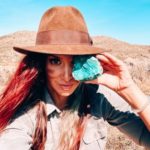
Elley has a degree in Economic Geology from the University of Nevada, Reno. She has eight years mining geology experience in Arizona. Elley has been an avid rockhound since she was a young girl. She has traveled all over the United States to collecting rocks and minerals and exploring abandoned mines. Elley is an expert in the field of mineral identification, and has a huge passion for it. She is one of the most enthusiastic geologist in her field. She loves teaching her fellow rockhounds everything she can about the geologic world around them. She maintains a website called ‘ElleyKnowsRocks.com’ and promotes rockhounding through Youtube, Twitter, Instagram and Facebook.
Pat Tucci and Zelda Bailey (members), “Namibian Mineral Safaris,”October 2020 –
Ted Grussing, “Opals,” March 2020 –
Peter J. Pilles, Jr., “The Earth: Minerals and Pigments from Elden Pueblo and Honanki,” February 2020 –
Drake Meinke, “Copper and Clarkdale…and What Happened to it All,” January 2020
Dr. Larry Jensen, “The Origins of and the Identification of Jaspers,” November 2019 –
Helen Serras-Herman, “Passion for Opals,” October 2019 –
Sue Celestian, “Geology of Western Australia,” May 2019 –
Pat McMahan (member), “Agates of Arizona,” April 2019 –
Wayne Ranney, “Amazing Antarctica and its Geologic Relation to Arizona,” February 2019 –
Dr. Kennard Bork, “Noteworthy Geosites of Northern Arizona”, January 2019 –
